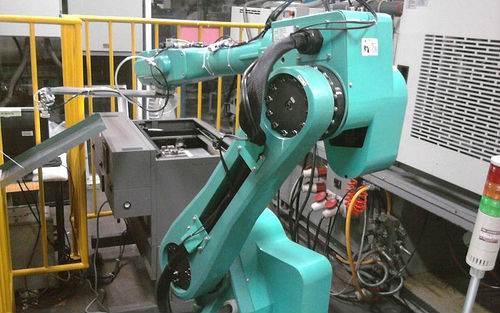Back in June 2011, Foxconn CEO Terry Gou announced that his company was planning to deploy one million robots across factory assembly lines. The plan was part of a company-wide effort to adopt more automation in the manufacturing process. Now, the Wall Street Journal reports that the automation process is underway, and employees are beginning to feel the effects.
One such employee is a man known as Zhang, who has spent the last two years working on the assembly lines at Foxconn’s Shenzhen plant. Zhang told the Journal that he and some of his colleagues were recently transferred to different positions after factory managers began deploying robotic arms to plug components into a motherboard. “There were about 20 to 30 people on the line before, but after they added the robots it went down to five people, who just pushed buttons and ran the machines,” he said.
At a June shareholders meeting, Gou said that more automation would eliminate the “monotonous, repetitive tasks” that have been assigned to low wage laborers in the past. At the time, Gou said the company planned to open their first fully automated plants within the next five to ten years.
Gou admitted the strategy did face some hurdles along the way, such as significant capital investment, and some possible political blowback. The company has long been a provider of reliable, low wage employment across China.
Foxconn insists that automation would only help produce more advanced products, saying robots would perform the more dangerous duties previously done by employees. “The younger generation of workers these days, they don’t want to continue to do boring, mundane, repetitive work, especially in the manufacturing sector,” Woo said. “We have to begin to add more value in the process, otherwise it will be difficult to attract a young generation of workers.”
Foxconn announced plans last week to expand operations in North America. Woo says the move came in response to demands for “Made in USA” products from their customers. Saying that the “supply chain is one of the biggest challenges for US expansion,” Woo says overcoming this obstacle would require Foxconn to harvest American engineering, perhaps looking towards a more robotics driven future. “Any manufacturing we take back to the U.S. needs to leverage high-value engineering talent there in comparison to the low-cost labor of China,” said Woo.



